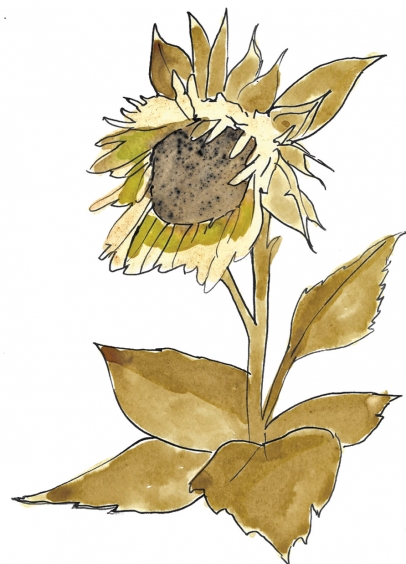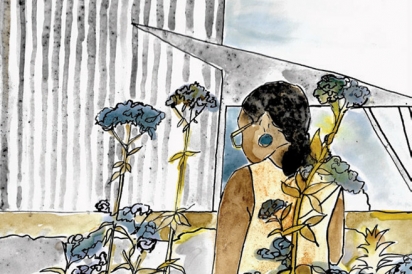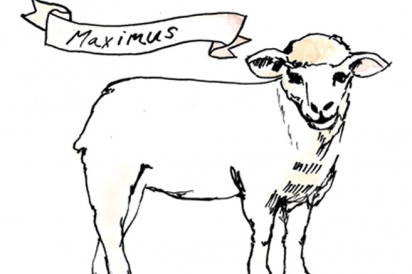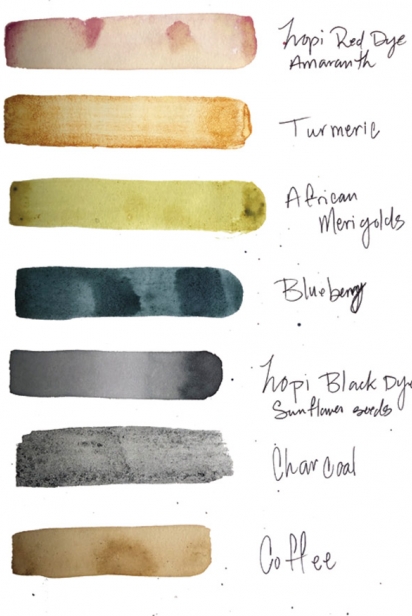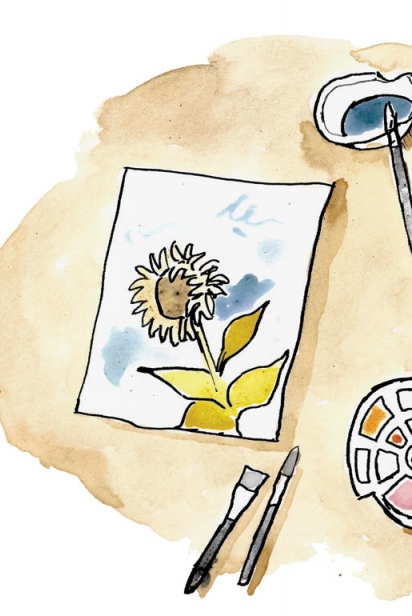Farm to Easel
Oklahoma Contemporary invites you to feast with your eyes
Illustrations By Sylvie Mayer Inks, Dyes, And Paints Sourced From Oklahoma Contemporary Arts Center’s Art Garden
“We eat first with our eyes” is the common aphorism attributed to an ancient Roman dude named Apicius, who apparently was okay with discounting the rest of our relevant senses. For those of us with the privilege of sight, his wisdom has inspired the way the culinary experience is treated. A bone-white plate holding scarlet red tomatoes topped with ivory slabs of mozzarella and verdant green leaves of fresh basil, slathered in a richly amber-colored balsamic vinegar, sets your receptors to know you’re about to enjoy a refreshing caprese salad.
Back in Apicius’ days, all of the paintings he’d see and the garments he wore came from the earth. Before chemical dyes and artificial fabrics, the colors and textures of the world were all natural. If you wanted to paint the sun, you’d have to find a naturally occurring color to match. There was no big-box craft store to buy plastic jugs of acrylic paint, only things that grew.
Oklahoma Contemporary is keeping that tradition alive, while located in the OKC district known as Automobile Alley — a name that connotes more of a history of mechanical manufacturing and diesel and exhaust than a creative space that harbors an art garden.
Even the term “art garden” can imply a different mental image when thinking about a contemporary art museum. Often, it connotes a lawn with sculptures to enjoy on an outing when the weather is pleasant. Oklahoma Contemporary takes a literal approach by planting certain flowers, herbs, and plants later utilized for pigments. In the summer, tall sunflowers will grow and eventually be used for their vibrant colors, as well as native greens such as amaranth, which turn vermillion.
For the opening of Oklahoma Contemporary’s current exhibition “The Art of Food,” which runs until May 22, the museum invited patrons to create their own watercolors using the art garden colors. The exhibition is focused on the cross-pollination of both the art and food worlds, and includes pieces from artists such as Roy Lichtenstein and Robert Rauschenberg, providing plenty of inspiration for any pigment.
This Farm to Easel ethos carries over to the classes that Oklahoma Contemporary runs year-round. Many of the museum’s pigments are used for painting classes, as well as its wide-sweeping textile and ceramics programs. The restraint inherent in utilizing specific colors from the earth can spark creativity. As a local torchbearer for next- level art, its programs are often designed to help the students take their minds off their day-to-day lives, shut out the outside world, and create something unique. The big-box craft store does not stock amaranth dye.
For textiles, Oklahoma Contemporary has a relationship with Mollie Spencer Farm in Yukon, which raises sheep for wool that is spun into yarn at Oklahoma Mini Mill in Guthrie. Some of the yarn includes the ultra-deluxe Merino wool — if you’ve ever worn it, you’ll want to live inside it for the rest of your life. Each package of wool is labeled with the name of the sheep the fluffy fabric came from, such as VIP critters like Maximus.
The head of the ceramics program and studio is planning to take things a step further by using clay soil that came from the foundation of the Oklahoma Contemporary building, unearthed during construction. Using natural clay is difficult, as the chemical composition and pH balance of the soil can be unpredictable when it comes time to fire it in one of the many massive onsite kilns. However, sometimes the best art is derived from uncontrollable variables.
An organic approach to creation can often be as literal as using what is in the ground — such as painting with a carrot, another Farm to Easel approach that has been taught at the museum. It’s this unpretentious attitude that allows Oklahoma Contemporary to be comfortable and accessible to all skill levels, either for those trying to pick up a meditative activity that gets them out of their work-life-balance headspace, or for seasoned artists who need a comfortable workshop space that provides the tools to push themselves further.
Art comes in many forms, and Dick Blick paints, polyester fabrics, and even Play-Doh have their place, but Oklahoma Contemporary’s Farm to Easel program causes you to look at a bowl of curry and wonder what art may come from your garden, or how your palate defines your palette.
Oklahoma Contemporary, 11 NW 11th St., Oklahoma City, (405) 951-0000, oklahomacontemporary.org/


